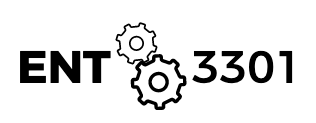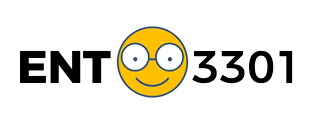QUOTES OF THE DAY
“The heart has its reasons which reason knows nothing of.” - Blaise Pascal
"Reason is, and ought only to be the slave of the passions" - David Hume
SUMMARY
At the heart of every great product or marketing campaign is a behavioral secret! In fact, our ability to make logical and rational choices is closely linked to our ability to experience emotions. Making decisions is also the most important job of any entrepreneur. Bad decisions can damage your business and compromise your personal well-being.
However, research shows that people are pretty bad at making decisions. This is because we have many irrational tendencies (also called cognitive biases). What are the most common biases in decision-making? What can you do to avoid them? And, how can you use people's irrational tendencies to design more emotionally engaging products that connect with people's hearts as well as their minds?
Understanding the secrets of human behavior can help you not only design more effective and emotionally appealing products through what's called "choice architecture", but also, and perhaps more importantly, help you make better decisions as you go through your own entrepreneurial journey (and life).
In this section of the course, we will learn about some of the most common (hidden) traps in decision-making. We will also discuss several businesses that were founded on behavioral economics principles.
QUESTIONS TO THINK ABOUT AS YOU DO THE READINGS
- Are people rational as most economists assume? What role heuristics play in decision-making?
- What are cognitive biases and why are they so difficult to overcome? Give an example.
- What is the truth about relativity? What is the decoy effect? How does asymmetric dominance works. Give an example for the decoy effect. [watch here]
- What is the anchoring trap? How is it related to arbitrary coherence? What is self-herding behavior? Why are they important for decision-making?
- What is the status quo bias? Give an example.
- What did Mark Twain mean when he said: "Mark Twain once noted about Tom Sawyer, “Tom had discovered a great law of human action, namely, that in order to make a man covet a thing, it is only necessary to make the thing difficult to attain.”
- Why are people so drawn to the price of zero? How can companies (and governments) capitalize on this idea?
- What is the sunk-cost fallacy?
- Are most people overconfident about their own abilities and accuracy?
- What is the confirming-evidence trap (or confirmation bias)?
- How can expectations cloud our behavior? What is the placebo effect? What did the MRI experiment of Coke and Pepsi revealed? What is the implication of his beer experiment?
- Do people enjoy more expensive things even if they have similar quality? What did Ariely find from his energy drink experiment?
- Are people more likely be risk-loving or risk-averse if they are facing a loss situation? How is that related to the framing trap?
- How can behavioral economics lower your energy bill? What is the main principle behind this business idea?
- What is the paradox of choice? Do you think that Barry Schwartz is correct? How can businesses capitalize on this idea?
REQUIRED READINGS/VIDEOS
- Daniel Ariely (2010). Predictably Irrational. [amazon.com] Read only Ch.1-3, Ch. 9-10.
- (17 pages) Hammond, Keeney, Raiffa (2006). The Hidden Traps of Decision Making. Harvard Business Review [read here] [alternative link]
- (8 mins) How behavioral science can lower your energy bill [watch here]
- (20 mins) The Paradox of Choice by Barry Schwartz [watch here]
- (17:34mins) Optimism bias [watch here]
- (50 mins) How to Make Better Decisions [watch here] (we will watch in class).
SUPPLEMENTARY MATERIALS
- CASE STUDY: John, Norton, and Norris (2015). Making sTickK Stick: The Business of Behavioral Economics. Harvard Business Review (15 pages)
- The Psychology Restaurants Use to Manipulate Yo [read here]
- The shady economics of ‘buy one, get one free’ deals [read here]
- How to make choosing easier [watch here]
- Why we make bad decisions [watch here]
- How to make hard choices [watch here]
- Life lessons from an ad man [watch here]
- The battle of future vs present self [watch here]
TED: Predictably irrational (series of 11 talks) [watch here]
- Chris Anderson (2010). Free: How Today's Smartest Businesses Profit by Giving Something for Nothing [amazon.com]
- Cognitive Biases Cheat Sheet [read here] [download cheatsheet]
- NPR: Facts Aren't Enough: The Psychology Of False Beliefs [listen here]
ASSIGNMENTS:
1. Take Quiz 9: Predictably Irrational (due Nov 1 at noon on Canvas)
2. Complete Discussion 2: Predictably Irrational (due Nov 3 at noon on Canvas)
At the heart of every great product or marketing campaign is a behavioral secret! In fact, our ability to make logical and rational choices is closely linked to our ability to experience emotions. Making decisions is also the most important job of any entrepreneur. Bad decisions can damage your business and compromise your personal well-being. However, research shows that people have many irrational tendencies (also called cognitive biases).
Understanding the secrets of human behavior can help you not only design more effective and emotionally appealing products through what's called "choice architecture," but also, and perhaps more importantly, help you make better decisions as you go through your own entrepreneurial journey (and life).
Read chapter 1 from Daniel Ariely’s book “Predictably Irrational.” Why is the idea of “relativity” so important to decision-making according to Daniel Ariely? Discuss the “decoy effect” and use one example from his book to support your answer.
Pick a chapter from the book (other than the ones you read already) and summarize it. What was the main lesson here?
Do you agree with Daniel Ariely that we often don’t know our preferences very well which makes us susceptible to manipulation? Describe a time when you made an inaccurate affective forecast when it comes to a product (service) you purchased. Why do you think that you were so inaccurate? Did you learn from the experience and avoid making a similar inaccurate forecast in the future?
How can you use the lessons from this module to design or market your product/service that you proposed earlier in the semester?

